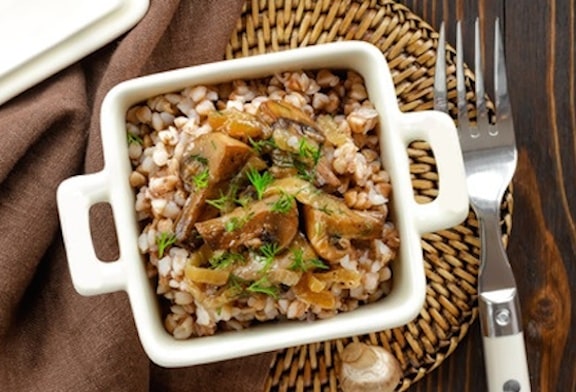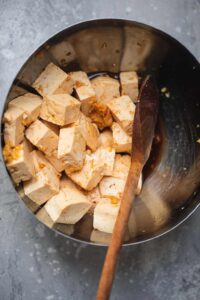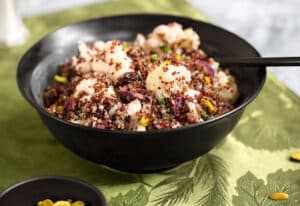Toasty, brown buckwheat groats may either be passionately disliked for their strong, distinct flavor and aroma or greatly savored for the same reasons. An oddity among grains, buckwheat is not a cereal grain in the botanical sense, but a beautiful pink-flowered plant related to rhubarb. The soft, pyramid seeds, when hulled and cracker, are known as buckwheat groats. Further milling produces buckwheat flour.
Buckwheat groats have long been available either in grain or kosher food sections of supermarkets, where they come in a box labeled kasha. In bulk sections of natural-food stores, buckwheat groats are available in various grinds–fine, medium, and course, which predictably, will vary their cooking times. They are often sold lightly toasted, which brings out their distinct aroma.
Buckwheat groats contain 11 percent protein and are a rich source of minerals, particularly iron, as well as phosphorus and potassium. They are one of the best grain sources of calcium. Buckwheat groats contain nearly the entire range of B vitamins and are particularly strong in thiamine and niacine.
Basic Cooked Buckwheat Groats: Use 2 parts water and 1 part grain. Bring the water or stock to a boil in a heavy saucepan. In the meantime, heat 1 tablespoon oil for every cup of groats in a heavy skillet. Add the groats and stir quickly to coat them in the oil. Toast over moderate heat, stirring frequently, until they become a shade darker and very aromatic, about 4 to 5 minutes. Pour the boiling water over them and cover. Simmer over low heat until the water is absorbed, about 15 to 25 minutes, depending on the grind.
Once the groats are cooked, they may be used in a number of ways:
- For a simple side dish, dress up cooked groats with lots of browned onions and a bit of chopped parsley or dill.
- Cooked groats are highly compatible not only with onions but also with mushrooms, celery, cabbage, and almonds. For a simple pilaf-style dish, sauté any or all of these and combine with cooked groats; season with salt, pepper, and fresh or dried herbs.
- Use groats as a stringer-flavored substitute for brown rice; try them in stuffed cabbage or in soups.
- Use groats as a substitute for, or mixed with, bulgur. They are similar in texture and appearance.
- In India and Eastern Europe, cooked buckwheat groats are simply eaten as a hot cereal. Add nondairy milk and a sweetener, dried fruits, or nuts of your choice.
- Jewish or Eastern European cookbooks often contain a number of traditional recipes using kasha. The best known are kasha varnishkas, which is groats combined with noodles, and kasha knishes, which are groats wrapped in a savory potato dough.

Here are some of VegKitchen's buckwheat groat recipes:
- Buckwheat Groats (Kasha) with Vermicelli and Fall Vegetables
- Super-Power Chia Bread
- Savory Stuffed Winter Squash
For lots more features on healthy lifestyle, explore VegKitchen’s Healthy Vegan Kitchen page.
Here are more of VegKitchen’s Natural Food Guides.






Nathalie says
This sounds like a rellay great recipe. I'll just have to figure out what buckwheat is called in Swedish! =) It's great to read about all the meals you try and make. I love the inspiration.
Nava says
Nathalie, you can use Google Translate to figure out what buckwheat is called in Swedish!